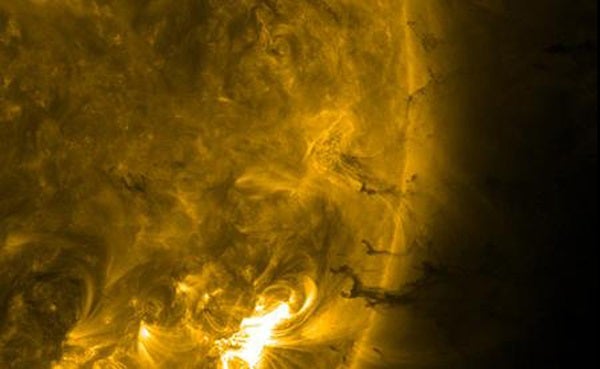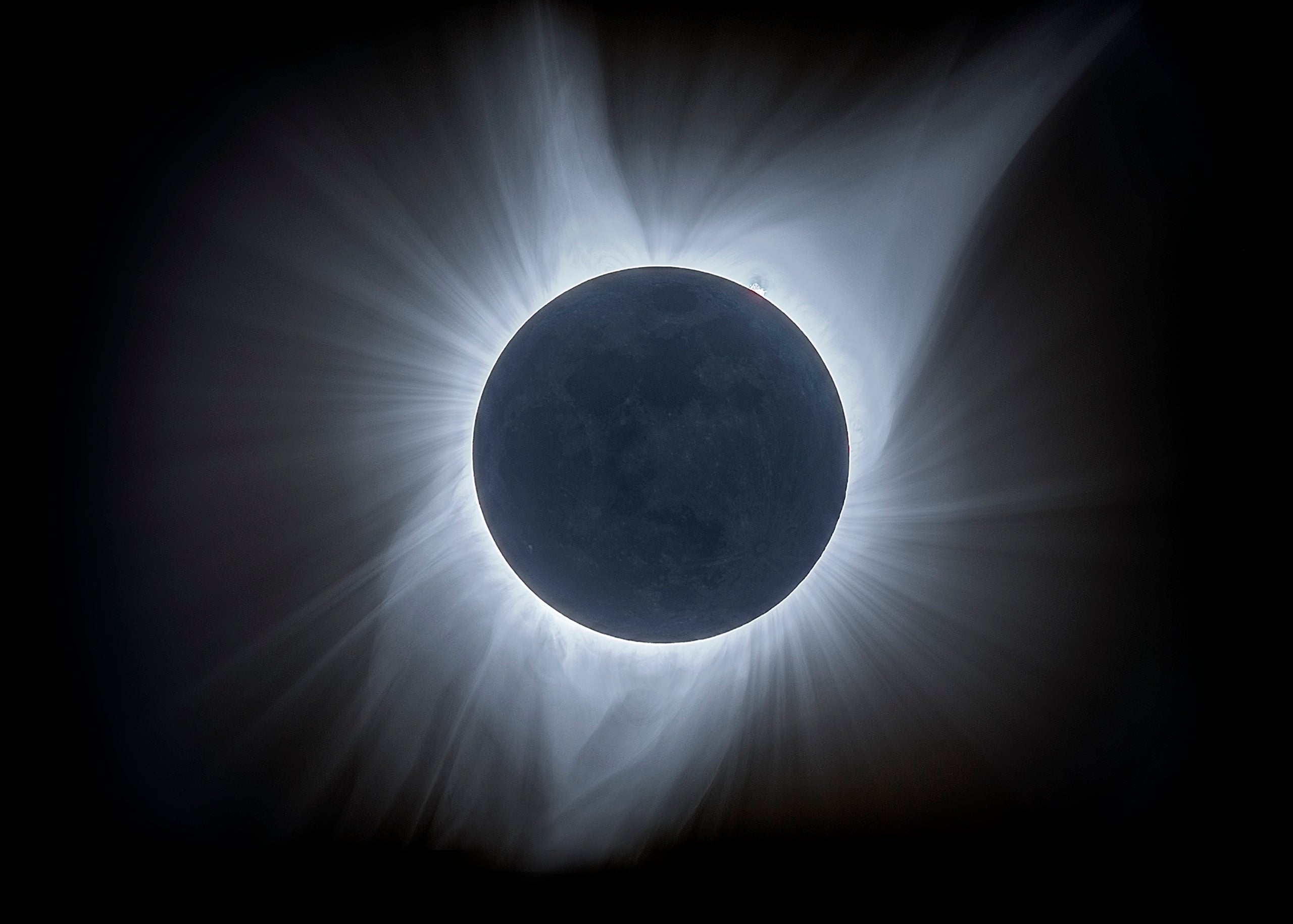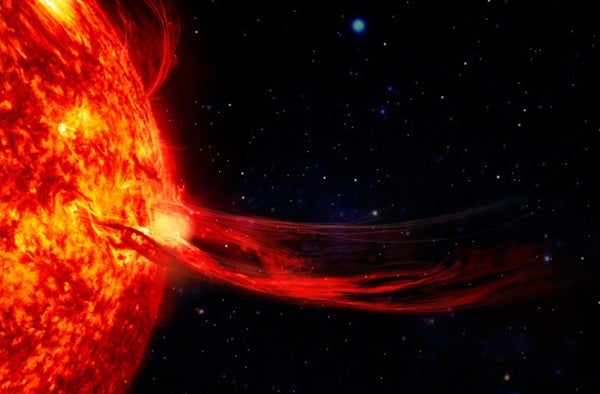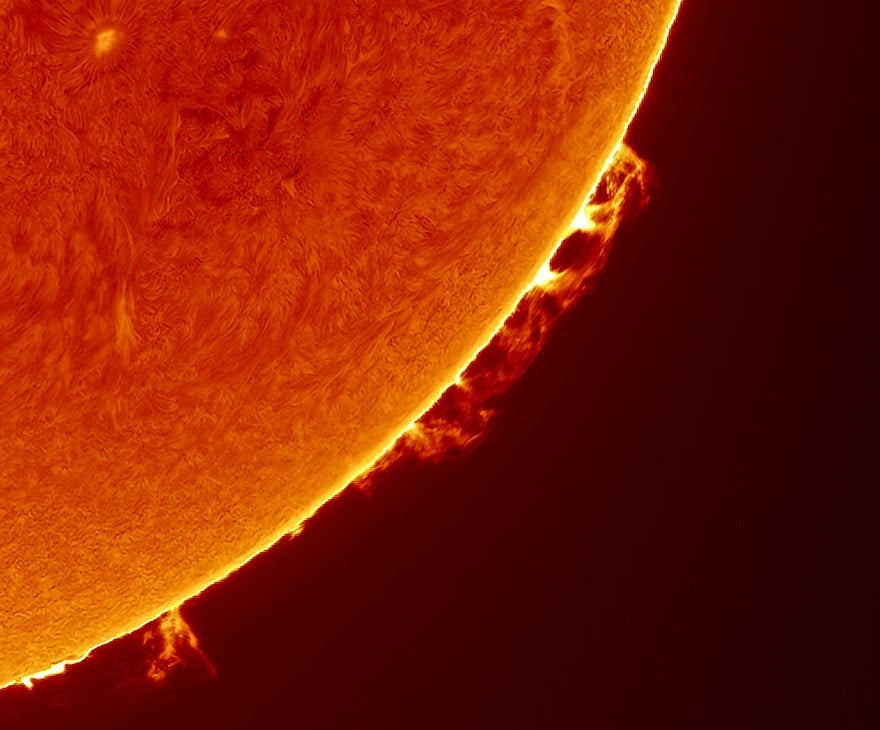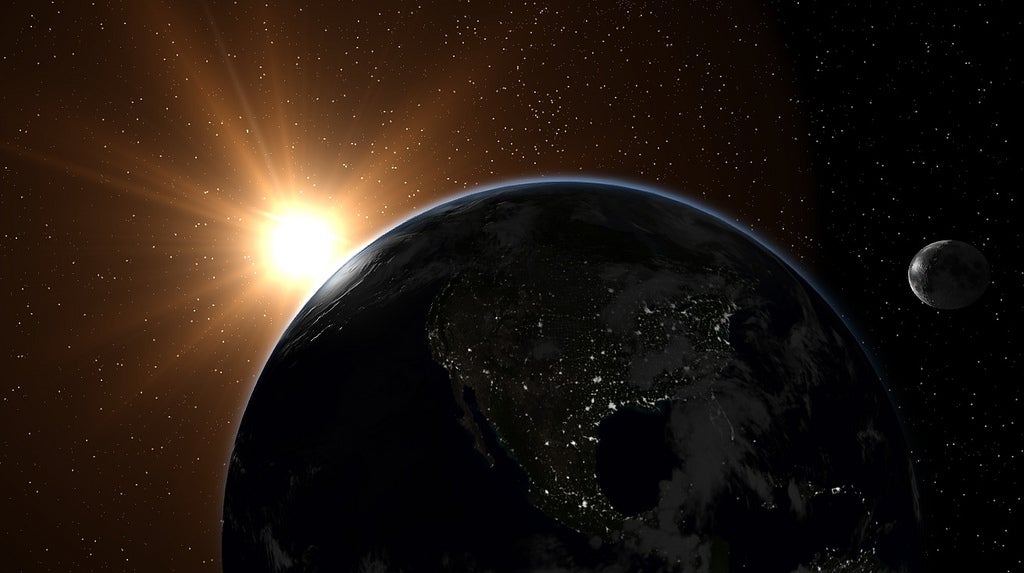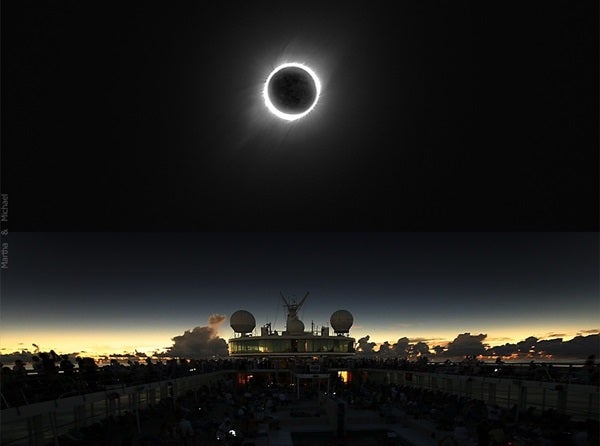On June 7, 2011, the biggest ejection of material ever observed erupted from the surface of the Sun. Over the days that followed, the plasma belched out by the Sun made its way out into space. But most of the material propelled up from the Sun’s surface quickly fell back toward our star’s surface.
For the solar physicists at UCL’s Mullard Space Science Laboratory, watching these solar fireworks was a unique opportunity to study how solar plasma behaves.
“We’ve known for a long time that the Sun has a magnetic field, like the Earth does,” said David Williams from UCL. “But in places, it’s far too weak for us to measure, unless we have something falling through it. The blobs of plasma that rained down from this beautiful explosion were the gift we’d been waiting for.”
Since 2010, NASA’s Solar Dynamics Observatory (SDO) has been constantly photographing the surface of the Sun. To our eyes, our star seems almost unchanging, with occasional fleeting sunspots. But the SDO’s instruments can cut through the dazzling brightness, magnify the detail, and see wavelengths of light that are blocked by Earth’s atmosphere. This combination of high-quality imaging and constant monitoring means that scientists can now see the detail of how the Sun’s dynamic surface changes over time.
The June 7, 2011, eruption was by some margin the biggest recorded since this constant monitoring began. The huge cascade of matter that fell back into the Sun following the eruption was a unique opportunity to study the fluid dynamics of these phenomena.
“We noticed that the shape of the plume of plasma was quite particular,” said Jack Carlyle, lead author of the study. “As it fell into the Sun, it repeatedly split apart like drops of ink falling through water, with fingers of material branching out. It didn’t stick together. It’s a great example of an effect where light and heavy fluids mix.”
Less dense materials typically float on top of denser ones without mixing together, for example oil sitting on water. Change the order by putting the denser fluid on top, however, and the denser one will quickly fall through the less dense one until their positions are reversed. The complex pattern formed by the denser fluid as it repeatedly splits and branches into ever-finer “fingers” of matter is caused by a phenomenon known as the Rayleigh-Taylor instability.
The team noticed in SDO’s high-resolution images that the falling plasma clearly underwent the Rayleigh-Taylor instability as it returned to the Sun’s surface. This is as would be expected — the solar plasma is denser than the solar atmosphere it is falling through. In space, a similar effect has been observed before, albeit on a much larger scale, in the Crab Nebula.
The Crab Nebula is the remnant of a supernova that exploded in the 11th century. In the millennium that has followed the explosion, denser matter has started to fall back into the center of the nebula, exhibiting the same finger-like structures as the team observed in the Sun. A major study of the Crab Nebula in 1996 found that the Rayleigh-Taylor instability in the Crab Nebula was actually slightly modified. The highly magnetized environment in the nebula changes the proportions of the fingers, making them fatter than they would be otherwise. The UCL team found that the same effect was going on in the June 7, 2011, coronal mass ejection. Even in an area where the Sun’s magnetic field was weak, it was modifying the Rayleigh-Taylor effect, changing the shape of the plume of plasma as it fell back into the Sun. This is the most spectacular example of the effect ever observed on the Sun.

